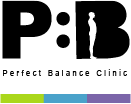Neck pain is a silent epidemic in dentistry, with a significant number of practitioners experiencing discomfort at some point in their careers. This article amalgamates insights from various expert sources to present a holistic approach to managing and preventing neck pain, ensuring dental professionals can maintain a healthy practice for years to come.
Understanding the Root of the Problem
Neck pain in dentistry is often the result of prolonged static postures, leading to muscle imbalances and a disrupted motor engram—the body’s blueprint for optimal muscle activation. Research indicates that both the type of dentistry practised and the duration of static postures contribute to neck pain, with the deep cervical flexors often becoming impaired and superficial muscles like the trapezius, scalenes, and levator scapula becoming overactive and symptomatic.
The Ergonomic Intervention
-
Loupes with Proper Declination Angle:
To prevent excessive neck flexion, dental loupes should have a steep declination angle, allowing practitioners to maintain a neutral neck position.
-
Postural Awareness and Correction:
Regular exercises to correct a rounded shoulder posture can alleviate additional strain on the neck. This includes stretches and strengthening exercises for the upper back and shoulders.
-
Cervical Support During Rest:
Using a neck support cushion that preserves the natural cervical curve during sleep is crucial, especially since positions like stomach sleeping can flatten this curve and contribute to pain.
-
Arm Support Utilisation:
Incorporating armrests can significantly reduce the strain on the neck by supporting the weight of the arms during procedures.
The Therapeutic Approach
-
Self-Treatment of Trigger Points:
Self-massage and targeted stretches can manage trigger points in the upper trapezius muscles, providing immediate pain relief and preventing chronic issues.
-
Rehabilitation Exercises:
A series of exercises, such as side flexion and chin tucks, can be performed throughout the day to strengthen the neck’s stabilising muscles and ensure long-term improvement.
A Daily Regimen for Neck Health
Morning:
Begin with a series of chin tucks and side flexions to activate and strengthen the deep cervical flexors.
Perform a chest stretch to open up the pectoral muscles and reduce forward shoulder posture.
Throughout the Day:
Take short breaks to perform Bruegger’s hold and shoulder rolls, alleviating muscle tension and promoting circulation.
Evening:
Engage in a routine of neck stretches before bed, focusing on the upper trapezius and cross-body shoulder stretches to maintain muscle elasticity.
Sleep:
Use an ergonomic pillow to support the natural curve of the cervical spine.
Professional Care and Personalized Assessment
For persistent or severe cases, seeking a professional assessment from a chiropractor or physical therapist is advised. They can provide a comprehensive rehabilitation program tailored to individual needs, ensuring the most effective management and recovery from neck pain.
Incorporating Real-world Solutions
Dr. Kevin Tan’s experience underscores the importance of practical solutions for managing neck pain. As a seasoned dentist, Dr. Tan has faced the all-too-familiar stiffness and discomfort that comes from a day’s work. His testimony, captured in this video:
Reveals the real-world impact of neck pain on both professional performance and personal life. The Iron Neck, a device he advocates for, exemplifies the type of ergonomic tool that can be seamlessly integrated into a dentist’s routine, offering a convenient and effective way to strengthen the neck muscles and alleviate pain. Dr. Tan’s routine with the Iron Neck is a testament to the efficacy of incorporating specialised equipment to address the unique challenges faced in dentistry.
Conclusion
By integrating these ergonomic and therapeutic strategies into daily practice, dental professionals can significantly reduce the risk of neck pain. It’s not just about managing discomfort—it’s about embracing a lifestyle change that prioritises musculoskeletal health, ensuring longevity and vitality in the demanding field of dentistry. Dr. Tan’s experience is a beacon, illuminating the path to a pain-free practice and an improved quality of life, both at the clinic and at home.







